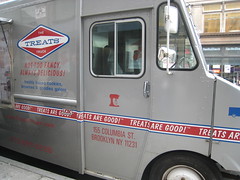 |
When an IRA owner dies while the IRA still has funds in it, the primary beneficiary(ies) have the opportunity to transfer the account to an inherited IRA and begin taking the Required Minimum Distributions (RMDs) over his or her lifetime. When this primary beneficiary dies, it can be difficult to figure out who the money goes to. This is known as the successor beneficiary.
It’s important to know the difference between a successor beneficiary and a contingent beneficiary. A contingent beneficiary takes the place of the primary beneficiary in the event that the primary beneficiary dies before the original owner does. A successor, on the other hand, takes the place of the primary beneficiary when the primary beneficiary outlives the original owner. So it’s a matter of timing. What we’re interested in is the successor beneficiary.
There are four main ways that a successor beneficiary is determined:
- Successor is named by the primary beneficiary. When the inherited IRA is established, the primary beneficiary has the opportunity to name one or more beneficiaries of the inherited IRA, along with contingent beneficiaries if desired.
- Successor is the primary beneficiary’s estate. If the primary beneficiary hasn’t designated a beneficiary of the inherited IRA, the primary beneficiary’s estate becomes the successor beneficiary of the IRA.
- Custodial documents name a successor beneficiary. Some IRA custodians provide for the designation of a successor beneficiary in the original plan documents. This is relatively rare, and even more rare that a successor is actually named.
- Original owner names a successor beneficiary. Sometimes the original owner has had the foresight to utilize a trust document of some variety to control succession among beneficiaries. In a case like this, the trust is the primary beneficiary, and the trust has a primary beneficiary and successor beneficiary(ies).
Below is a flowchart which describes how the ownership of an IRA flows to different beneficiaries. (click on the chart to see a larger view)
Distribution for the Successor Beneficiary
So, having sorted out that we are working with the appropriate successor beneficiary, we need to determine what is the proper distribution period for the successor beneficiary. As we know, if the IRA is an inherited IRA, it is subject to Required Minimum Distributions, over a period determined by the beneficiary’s age at the time of the death of the original owner. This figure is determined from Table I in the first year of distribution (the year after the death of the original owner), and is a set period of time. The factor from Table I is used in the first year, and each subsequent year one is subtracted from the first factor and the IRA is distributed based on that amount.
So, for example, if the beneficiary is 71 years of age in the first year of distribution, according to Table I the factor is 16.3. The IRA value is divided by 16.3 to come up with the RMD for the first year. Each subsequent year 1 is subtracted from the Table I factor, so that the IRA is distributed over 16.3 years. This is known as the Applicable Distribution Period, or ADP.
When a successor beneficiary takes over to receive distributions from the inherited IRA, the original ADP is still in effect, and the IRA must be distributed over that remaining period to the successor beneficiary(ies).
Complications
Several factors can add a considerable degree of complication to the process – such as if there are multiple primary beneficiaries and/or multiple successor beneficiaries.
Each primary beneficiary is treated separately, and the successors for each (unless determined by the original plan as mentioned above) are determined by the individual beneficiary. When there are multiple successors, each one is treated separately and the original ADP for the applicable primary beneficiary applies to all successors pro rata for the successor’s share.
Another complication is when one or more beneficiaries disclaims the inheritance. In a case like that, first it is determined whether the original beneficiary designation had pre-determined the successor for each primary beneficiary (such as “per stirpes”, meaning that the heirs of the original beneficiary are bequeathed the disclaimed share). In the absence of this sort of designation, the other beneficiaries in the primary class take over the disclaimed share.
Of course in the real world there are many, many more complications, but this should give you a place to start. Use the comments section below to bring in your more complex situations and we’ll work them out.